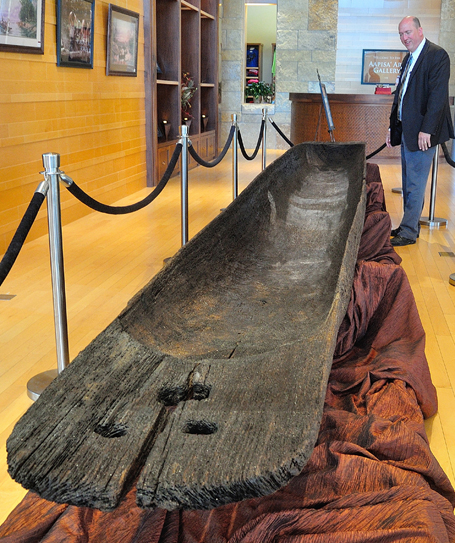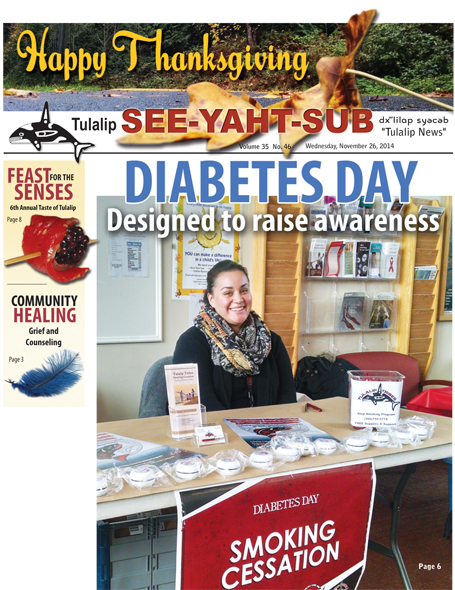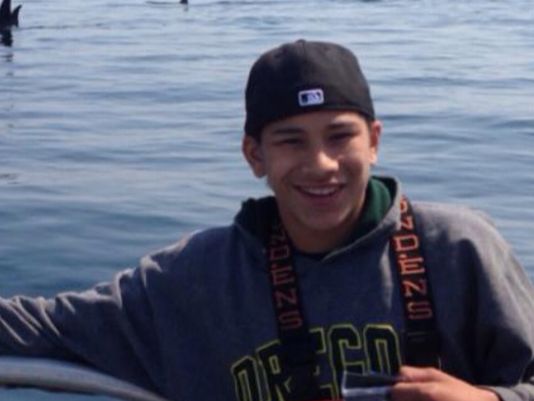Month: November 2014
Native Art Mart – Daybreak Star, Nov 22 and Dec 20
The Native Art Mart is Saturday, November 22, 10am – 4pm
Get your Holiday Gifts at our Art Mart at Daybreak Star in Discovery Park! Nov15th and Nov 22nd and Dec 20th.
Holiday Shopping at the Annual Art Mart at Daybreak Star!
Beautiful work by Native American Artists, Salmon, Fry Bread, Entertainment and Great Music.
Benefit for United Indians Elder Meals and Community Programs.
Buy Local, Buy Authentic
Native American artists will be selling and showcasing handmade authentic arts and crafts. UIATF is in full support of The Indian Arts and Crafts Act. This is a free event open to the public.
http://www.unitedindians.org/arts-culture/indian-art-mart/
November 26, 2014 Tulalip See-Yaht-Sub
Click the highlighted link below to download the November 12, 2014 Tulalip See-Yaht-Sub
Click here to download Dec 3 SYS
Tribal leaders, Commissioner warn of oil train dangers
Washington’s people and environment potentially at risk
Press Release: Washington State Department of Natural Resources
OLYMPIA – Increased oil train traffic on Washington’s aging rail system puts the state’s people and ecosystems at risk, according to an opinion piece by ten tribal leaders and the Washington State Commissioner of Public Lands Peter Goldmark, published today in the Seattle Times.
“Crude By Rail: Too Much, Too Soon” calls for federal regulators to improve safety protocols and equipment standards on Washington rail lines to deal with a forty-fold increase in oil train traffic since 2008. Trains carrying crude oil are highly combustible and, if derailed, present serious threats to public safety and environmental health.
Tim Ballew II, chairman of the Lummi Nation; Jim Boyd, chairman of the Confederated Tribes of the Colville Reservation; Brian “Spee~Pots” Cladoosby, chairman of the Swinomish Indian Tribal Community; William B. Iyall, chairman of the Cowlitz Indian Tribe; Maria Lopez, chairwoman of the Hoh Indian Tribe; David Lopeman, chairman of the Squaxin Island Tribe; Fawn Sharp, president of the Quinault Indian Nation; Charles Woodruff, chairman of the Quileute Tribe; Herman Williams Sr., chairman of the Tulalip Tribes; and Gary Burke, chairman of the Board of Trustees of the Confederated Tribes of the Umatilla Indian Reservation joined Commissioner Goldmark in urging policymakers to address critical issues around the increase of oil train traffic through the state.
“The Northwest has suffered from a pollution-based economy,” said Cladoosby in a statement. “We are the first peoples of this great region, and it is our responsibility to ensure that our ancestral fishing, hunting and gathering grounds are not reduced to a glorified highway for industry. Our great teacher, Billy Frank, Jr., taught us that we are the voices of the Salish Sea and salmon, and we must speak to protect them. If we cannot restore the health of the region from past and present pollution, how can we possibly think we can restore and pay for the impact of this new and unknown resource?
“We are invested in a healthy economy, but not an economy that will destroy our way of life. We will not profit from this new industry, but rather, we as citizens of the Northwest will pay, one way or another, for the mess it will leave behind in our backyard. We will stand with Commissioner Goldmark and our fellow citizens and do what we need so those who call this great state home will live a healthy, safe and prosperous life,” said Cladoosby.
“Good public policy demands that we make informed decisions using information based on the best science and perspective that must include cultural values and traditional knowledge,” said Quinault President Fawn Sharp. According to her statement, the Quinault Tribe is leading a movement against three oil terminals in Grays Harbor and most recently joined more than 700 Washington state citizens to testify at an October hearing held by the Department of Ecology.
“The Quinault are national leaders of long-standing in natural resources protection and strive to protect the oceans and waterways across the Northwest,” said Sharp.
For Tulalip Chairman Herman Williams, Sr., endangerment of fish runs by oil train pollution is a key concern.
“For generations we have witnessed the destruction of our way of life, our fishing areas, and the resources we hold dear,” said Williams in a statement. “The Boldt decision very clearly interpreted the 1855 Treaty of Point Elliott to reserve 50 percent of the salmon and management to the tribes. The federal government must now partner with tribes to protect the 50 percent of what remains of our fishing rights. The Tulalip Tribes will not allow our children’s future to be taken away for a dollar today. Our treaty rights are not for sale,” said Williams.
According to Commissioner Goldmark, tribal leadership on the oil train issue is essential.
“Tribal leaders bring unique perspective and concern about threats to our treasured landscapes,” said Goldmark. “It’s an honor to join them in this important message about the growth of oil train traffic in our state and the threat it poses to public safety, environmental sustainability, and our quality of life.”
Free Community Fitness Class
Collect the Red & White, Nov 22
Tulalip Constitution study sessions start December 4
10 weeks of study will prepare citizens to recommend constitutional amendments
By Niki Cleary, Tulalip News
A concern brought up at the 2013 Annual General Council meeting is the idea that the Tulalip Tribes Constitution and Bylaws are outdated and need to be amended to meet the needs of today’s tribal citizens. The concern was brought up again at the 2014 Semi-Annual General Council meeting. Vice-Chairman, Les Parks said it’s time to address the issue.
“We’re going to bring the membership into a room and give a 10-week review so that we can understand every word [in the constitution],” he said. “At the end of 10 weeks we’ll have a number of members who will fairly well understand what the constitution says.”
Parks hopes to create a constitution review team from that group of participants.
The constitution needs some updates, Parks acknowledged. However, he explained, in order to get the best amendments, we have to know what’s already in the constitution.
“The Constitution was created in 1934, it’s worked ever since. The sanctity of the Constitution cannot be overstated,” Parks explained. “This is a good document. I don’t want to go in with a notion that we’re going to change the world, we’re just going to clean it up. It’s going to be a process of getting everybody to understand what the constitution says.”
Parks compared this effort to the grassroots meeting he held while campaigning, stressing that he wants changes to the constitution to be community based. He’s recruited several tribal employees (Josh Cleveland, Willa McLean, Lori Parks and Elisabeth Williams) to assist with the effort. But, while they may be doing some of the work during office hours, they are not earning extra pay for their efforts. Even meals will be potluck style and not provided by the tribe.
“We want to keep it volunteer,” Parks said. It’s important, he iterated, to have engaged tribal citizens in the sessions. He also encouraged tribal youth to get involved, pointing out that current leadership was raised during a time when some of the most influential sovereignty battles were in progress. Current youth, he worried, may not understand the relevance of protecting the treaty and having a strong constitution.
“I think it needs to be opened up to our youth. We’re looking into whether youth can get school credit for this.”
The agenda for the meetings is simple. Share a meal, pull out the constitution and bylaws and read, discuss and understand the documents.
“We’re going to read word-by-word and talk about the meaning of each sentence. We want to know and understand what the Constitution says from beginning to end. We’ll have legal by our side as we go through the next 10 weeks, and hopefully we’ll get through two pages of the constitution every night.”
After the review of the constitution is complete, the group will go over the amendments that have already been enacted.
“There’s a list of all the amendments that occurred over the years, we’re going to get detail on every amendment, see what prompted the amendment, how many people showed up and how many voted. We want to give our participants a thorough history of why it came about.”
The sessions will be held on Thursdays starting December 4th and continuing through February 19th. Dinner will begin at 5:00 p.m., each session lasts approximately three hours. For more information or to receive reminders of the meetings contact: Willa McLean via text or phone 425-905-0632 or email WillaMcLean@tulaliptribes-nsn.gov. If you text or email, please leave detailed contact info including whether you prefer reminders via text, email or phone call.
Constitution study session dates:
December 4th, 11th, 18th
January 8th, 15th, 22nd, 29th
February 5th, 12th, 19th
Ancient canoe exhibit inspires thousands at Chickasaw Cultural Center

By: Chickasaw Nation
SULPHUR, Okla. – They were the metaphorical pickup trucks of their day. Native Americans used them to ferry families across rivers, move trade goods to market and a means of travel.
Dugout canoes were difficult to fashion into water-worthy vessels. All were made from a single tree trunk, fire coals placed atop it and then the charred wood was hollowed out with an adze or similar sharp-edged tool made of stone, sea shells and, eventually, metal.
In 2000, a group of Florida high school students stumbled onto what is believed to be the largest treasure trove of dugout canoes in the world – 101 of them dating from 500 to 5,000 years old, according to experts.
That discovery gave birth to Dugout Canoes: Paddling through the Americas, a world-class exhibit on display at the Chickasaw Cultural Center through May 6, 2015.
More than 9,700 people have experienced the exhibit as of Nov. 1. An additional 6,000 have admired a Mississippi vessel displayed away from the main dugout canoe exhibit which is estimated to be 514 years old.
Window blinds are drawn almost like a secret is hidden in the Aapisa Art Gallery at the Chickasaw Cultural Center.
The lights are dimmed too, along with a sign warning visitors not to touch – a departure from many exhibits more than 300,000 people have enjoyed since the center’s opening in 2010.
Director of Operations Brad Deramus swings open the door and extends an invitation to step foot inside and behold an item made in 1500 A.D., discovered intact and preserved from a swamp in the Mississippi Delta.
Most likely the immense 26-foot long dugout canoe was made by Chickasaws.
“Think George Washington’s great-great-grandfather,” Deramus remarks to illustrate the age of the ancient vessel.
It was discovered in Steele Bayou Lake in Washington County, Mississippi, decades ago. It is on loan from the Department of Mississippi Archives and History to augment Dugout Canoes: Paddling through the Americas.
Weighing in at more than 1,000 pounds., it is made from a single bald cypress tree and is manufactured in the ancient Chickasaw tradition. It is the perfect complement to Dugout Canoes: Paddling through the Americas, a display thrilling adults and children, Deramus said. Interactive kiosks, art endeavors, ancient canoes and signs abound encouraging visitors to touch many of the displayed items.
A 400-year-old pine tree dugout canoe, along with tools dating to 600 A.D. and remnants of some of the 101 dugout canoes discovered by the students are included in the exhibit. Many of the display items are hands-on. Some of the more ancient items are behind glass enclosures. CCC cultural experts are on hand to assist visitors who have questions.
While none of the 101 dugout canoes discovered by the Gainesville, Florida, students in drought-stricken Newnans Lake 14 years ago are displayed, remnants of some of the ancient vessels are at the Chickasaw Cultural Center to be enjoyed.
In fact, while some of the canoes discovered by students are fully intact, most were left in place at Newnan’s Lake because excavating them would prove destructive after centuries of protection by water and mud.
About American Indian Heritage Month
Efforts to establish a time to honor Native American Heritage began as early as 1916, when the governor of New York officially declared “American Indian Day” in May of that year. Since that time, a number of states have designated specific days or weeks to celebrate Native American heritage. Since 1976, Congress and the president have designated a day, a week or a month to honor American Indian and Alaska Native people. November has been set aside for the celebration since 1991, when a Senate Joint Resolution was passed authorizing and requesting the president to proclaim each month of November thereafter as “American Indian Heritage Month.”
Marysville school shooter’s text: ‘Bang bang I’m dead’
By: Associated Press, source: KOMO News
MARYSVILLE, Wash. (AP) – A detective investigating the shooting at a Marysville high school that left five teens dead says in court papers that the young shooter’s texts turned dark the week before he opened fire, with references to his funeral and the message: “Bang bang I’m dead.”
Moments before Jaylen Fryberg, 15, shot his fellow students Oct. 24 in the Marysville Pilchuck High School cafeteria, he texted more than a dozen relatives, describing what he wanted to wear at his funeral and who should get his personal possessions, the detective’s search warrant affidavit says.
The boy asked relatives to apologize to the families of his friends “who get caught up in the (expletive) tomorrow” – referring to the day after the shooting. He also sent texts in the previous days to a female friend talking about his death and funeral.
The popular teen fatally shot four friends he had invited to lunch and wounded a fifth teen before killing himself.
The victims are Gia Soriano, Zoe Galasso and Shaylee Chuckulnaskit, all 14, and Andrew Fryberg, 15. All were shot in the head. Nate Hatch, 14, was shot in the jaw and is recovering. Andrew Fryberg and Hatch are the shooter’s cousins.
Investigators have found no evidence to support a rumor that students had expressed concerns about Jaylen Fryberg to school authorities before the shooting, police spokeswoman Shari Ireton said Wednesday.
The Daily Herald of Everett obtained the Everett police detective’s affidavit, which provided details of the boy’s last text messages, but not their full contents. The detective had been seeking a judge’s permission to examine the boy’s cellphone. Multiple agencies are investigating the shooting and are sifting through hundreds of text messages and social media posts.
While the boy had publicly posted some angry messages on social media starting in late July, his posts otherwise were “pretty normal,” the detective wrote. The change began Oct. 18.
Detectives learned that he had been upset by something that happened between him and a 15-year-old identified in the affidavit only by her initials and described as a “close friend.”
Investigators know what happened between the two but decided against including specifics in the search warrant documents to protect her identity, court papers said.
On Oct. 18, Fryberg texted: “Ohk (sic) well don’t bother coming to my funeral.” The girl stopped responding and ignored other text messages. On Oct. 22, the boy texted: “I set the date. Hopefully you regret not talking to me,” ”You have no idea what I’m talking about. But you will” and “Bang bang I’m dead.” When the friend asked Fryberg to stop, he replied: “No. You don’t care. I don’t care.”
When she stopped responding, Fryberg tried to reach her through another friend. The morning of Oct. 24, Fryberg used Facebook to send that friend a picture of a gun sitting between his legs, court papers said. He told the friend to have the girl “call me before I do this.”
That message was sent minutes before the shooting started.
The detective met with two of Fryberg’s uncles the day of the shooting, the Daily Herald reported. One man said he and 13 other relatives received a text from the boy minutes before the gunfire. The message was titled: “My Funeral (expletive).”
Detectives later searched the boy’s room.
“My hope was that we could find a note or something that would help explain what happened,” the detective wrote. “Nothing of evidentiary value was located in Jaylen’s room.”
Naloxone kits now available in Snohomish County
|
Providence Pharmacy
19200 N Kelsey St
Monroe, WA
3601-794-5555
QFC Pharmacy
27008 92nd Ave NW
Stanwood, WA
360-629-0662
|
Haggen Pharmacy
3711 88th St NE
Marysville, WA
360-530-7761
Bellegrove Pharmacy
18800 142nd Ave NE
Woodinville WA
425-455-2123
|















